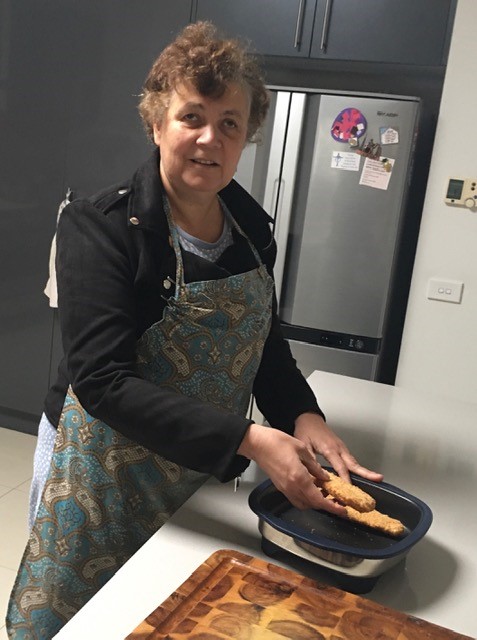Cecile Lablache is passionate about cooking.
The 57 year-old is totally blind due to retinitis pigmentosa, an inherited condition that causes the de-generation of cells in the retina.
Cecile moved to Australia in 1997, and soon began accessing services from the Royal Victorian Institute for the Blind, now Vision Australia.
Thanks to that Cecile learned about a range of equipment available to make cooking easier for people who are blind or have low vision. That equipment and her passion for cooking has allowed Cecile to continue to be active in the kitchen.
“I’m my own occupational therapist. I do my own thing and solve the problems myself,” Cecile said.
“I want people to see what I’m using for myself. The whole idea is opening up opportunities for people who can’t see.”
The following are some handy hints that Cecile believes will make cooking easier, safer and more enjoyable for others who are blind or have low vision.
Use labels
Cecile uses a standard microwave as opposed to one that talks, and uses tactile markers to help her operate it.
For Cecile, labels, either braille or print, also help in identifying grocery items, not just appliances.
“I use an ID Mate, a bar code scanner that reads out labels on tins or boxes of food,” she said
“I have since realised that it is not always the best thing to use because when my old ID Mate stopped working I didn’t know what was in a lot of my boxes.
“I got my neighbour to write labels on my Tupperware boxes so that if I have a sighted person around they can tell me what’s in them.”
Find the equipment that suits you
Cecile has a range of different equipment in her kitchen, all of which help overcome a particular challenge.
“I found pieces of adaptive technology like the talking scale and the liquid level indicator.”
A liquid level indicator is a particularly useful piece of equipment, as it attaches to a cup or jug and it beeps when the liquid reaches a certain level.
“I’ve had my talking scale for a good 20 years and it’s still going very well, touch wood. It can weigh as little as two grams.”
Cecile said that it is good to keep an eye out for new equipment designed to help someone who is blind to cook.
“Recently I purchased a talking measuring jug. When I came home with it, I realised it doesn’t actually work with an amount as small as a tablespoon.
“If I’ve got to measure an amount as large as a cup it’s useful. I pour quantities into the jug, the jug weighs them and tells me if I have a cup.”

Caption: Cecile uses a mix of specialist and mainstream equipment in the kitchen.
Make the most of mainstream equipment
Cecile doesn’t just rely on specialist blindness and low vision equipment in the kitchen, with standard equipment also having features that help her.
One piece of equipment Cecile recommended for aspiring blind cooks is the Tupperware MicroPro Grill.
“I can tell you it’s a blind person’s dream come true in every way. If you’re cooking with oil you don’t need to worry about splashes because it has a lid.
“The handle is silicon so you don’t have to use oven gloves as it’s not too hot to hold.”
Cecile also believes induction stoves can be useful for people who are blind, due to the fact they will turn off when pots or pans are removed.
Vision Australia can help you find the right equipment to help you be safe and independent in the kitchen. Call us today on 1300 84 74 66 or email [email protected] to find out more.
Check out our online Vision Store to find out more about the range of equipment available to support people who are blind or have low vision.










